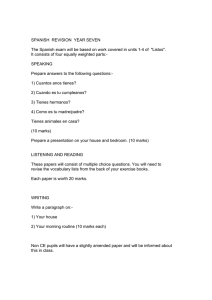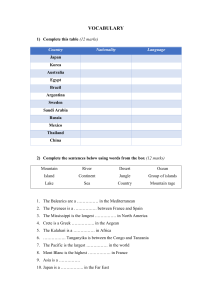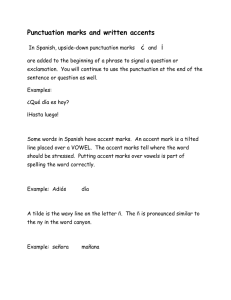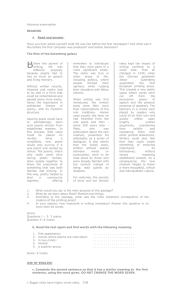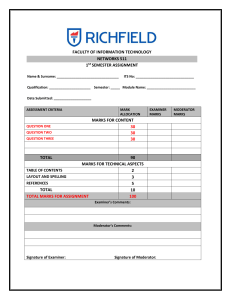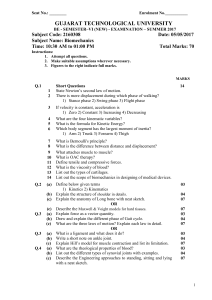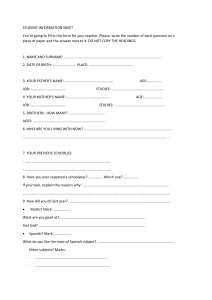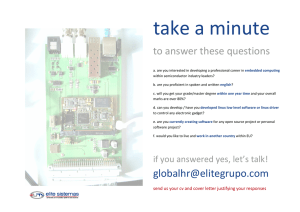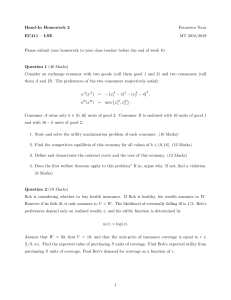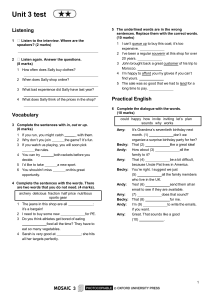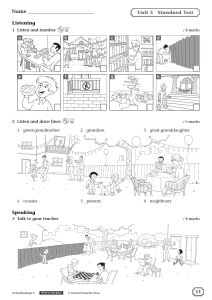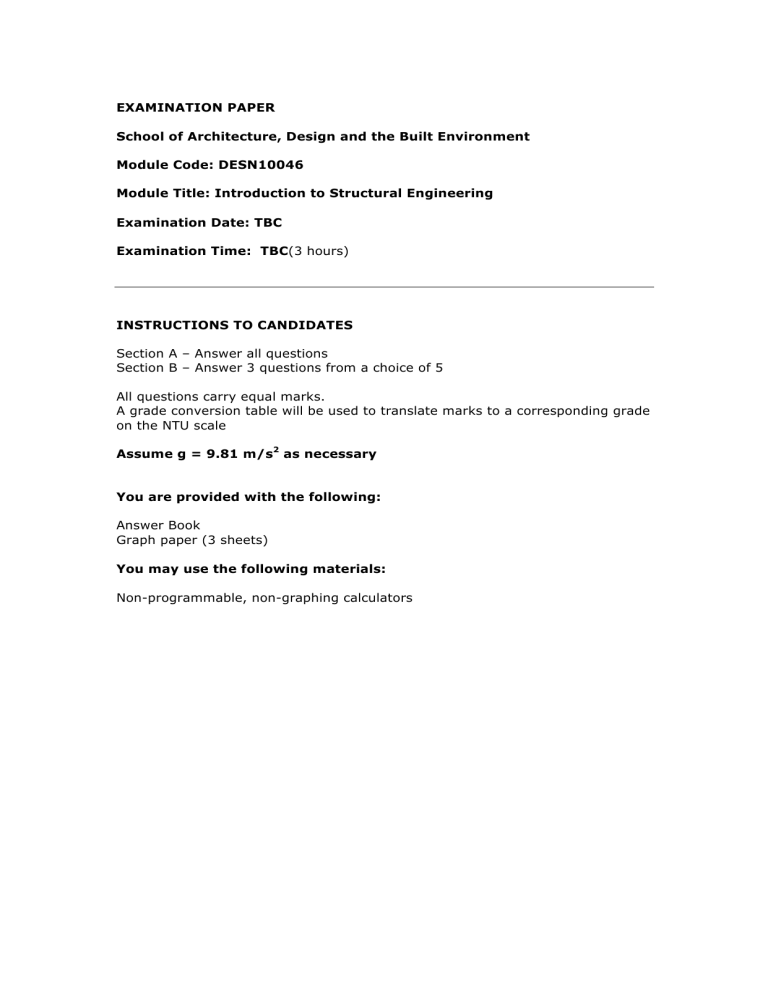
EXAMINATION PAPER School of Architecture, Design and the Built Environment Module Code: DESN10046 Module Title: Introduction to Structural Engineering Examination Date: TBC Examination Time: TBC(3 hours) INSTRUCTIONS TO CANDIDATES Section A – Answer all questions Section B – Answer 3 questions from a choice of 5 All questions carry equal marks. A grade conversion table will be used to translate marks to a corresponding grade on the NTU scale Assume g = 9.81 m/s2 as necessary You are provided with the following: Answer Book Graph paper (3 sheets) You may use the following materials: Non-programmable, non-graphing calculators INTRODUCTION TO STRUCTURAL ENGINEERING DESN10046 Page 2/7 SECTION A – ANSWER ALL QUESTIONS 1. For the simply supported beam shown in Figure Q1: (i) Determine the support reactions. (4 marks) (ii) Draw a shear force diagram showing principal values. (8 marks) (iii) Draw a bending moment diagram showing principal values. (8 marks) 5kN 80kN 10kN/m 1m 5m Figure Q1 1m 1m INTRODUCTION TO STRUCTURAL ENGINEERING DESN10046 Page 3/7 SECTION A 2. / continued Determine the magnitudes and natures of the forces in the members of the pin-jointed truss shown in Figure Q2. (Note: Little credit will be given unless the forces and their natures are clearly illustrated on a diagram of the truss). (20 marks) 4m 4kN 4kN 8kN 8kN 20kN 3m 3m 3m Figure Q2 3m 3m 3m INTRODUCTION TO STRUCTURAL ENGINEERING DESN10046 Page 4/7 SECTION B – ANSWER ANY THREE QUESTIONS A singly symmetric timber section, shown in Figure Q3, is used as a simply supported beam having a span of 4m. Determine the maximum tensile and compressive bending stresses induced in the section due to a uniformly distributed load of 5kN/m. 100 (20 marks) 200 3. (mm) 100 100 Figure Q3 100 INTRODUCTION TO STRUCTURAL ENGINEERING DESN10046 Page 5/7 SECTION B / Continued (a) Use the method of sections to determine the magnitudes and natures of the forces in members X, Y and Z of the pin-jointed truss shown in Figure Q4a. (10 marks) 2 10kN X Z Y 2 10kN 2 4. 2 2 2 4 (m) Figure Q4a (b) Determine the magnitude, direction and line of action of the resultant for the non-concurrent coplanar forces shown in Figure Q4b. (10 marks) 20kN 10kN 40kN 20kN o o 60 60 1m 3m Figure Q4b 1m INTRODUCTION TO STRUCTURAL ENGINEERING DESN10046 Page 6/7 SECTION B / Continued 5. (a) Indicate the directions of the force reactions at the supports of the beams shown in Figure Q5a. All loads are equal in magnitude (point loads) or intensity (distributed loads). Sketch, also, approximate shear force and bending moment diagrams for the beams. (10 marks) = = (ii) (i) Figure Q5a (b) Determine the reactions at the support point for the beam shown in Figure Q5b. (10 marks) 60kN/m 10kN 2m 1m 3m Figure Q5b INTRODUCTION TO STRUCTURAL ENGINEERING DESN10046 Page 7/7 SECTION B / Continued 6. A steel beam has an I-section of overall depth (D) of 540mm and second moment of area about its major axis (Ixx) of 66800cm4. Determine the maximum span over which the beam, when simply supported, can carry a uniformly distributed load of 20kN/m along entire span. Given that the deflection must not exceed 15mm and the bending stress is limited to 180N/mm2. (Esteel = 200KN/mm2; Central deflection due to uniformly distributed load of total load (W), acting on a simply supported beam of span (L) is 5WL3/(384EI)). (20 marks) 7. The short column shown in cross section in Figure Q7 is subjected to the compressive loads indicated. Determine the stresses at points A, B, C and D shown in the figure. (20 marks) Figure Q7 END OF PAPER
